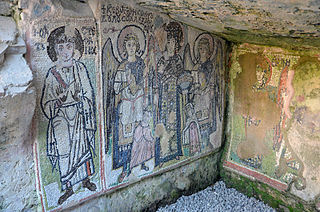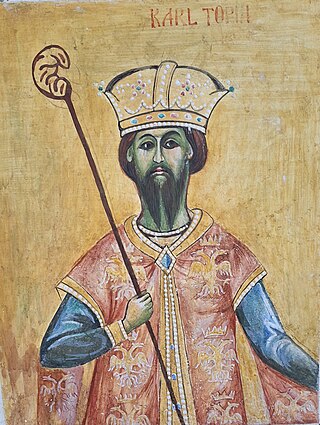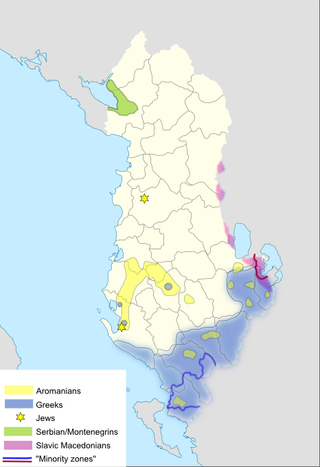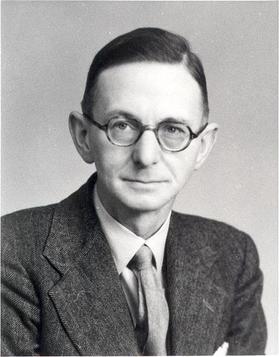Related Research Articles

Dame Kathleen Mary Kenyon, was a British archaeologist of Neolithic culture in the Fertile Crescent. She led excavations of Tell es-Sultan, the site of ancient Jericho, from 1952 to 1958, and has been called one of the most influential archaeologists of the 20th century. She was Principal of St Hugh's College, Oxford, from 1962 to 1973, having undertaken her own studies at Somerville College, Oxford.

Butrint was an ancient Greek polis and later Roman city and the seat of an early Christian bishopric in Epirus.

Durrës is the second-most-populous city of the Republic of Albania and seat of Durrës County and Durrës Municipality. It is one of Albania's oldest continuously inhabited cities, with roughly 2,500 years of recorded history. It is located on a flat plain along the Albanian Adriatic Sea Coast between the mouths of the Erzen and Ishëm at the southeastern corner of the Adriatic Sea. Durrës' climate is profoundly influenced by a seasonal Mediterranean climate.

Richard Hodges, is a British archaeologist and past president of the American University of Rome. A former professor and director of the Institute of World Archaeology at the University of East Anglia (1996–2007), Hodges is also the former Williams Director of the University of Pennsylvania Museum of Archaeology and Anthropology in Philadelphia. His published research primarily concerns trade and economics during the early part of the Middle Ages in Europe. His earlier works include Dark Age Economics (1982), Mohammed, Charlemagne and the Origins of Europe (1983) and Light in the Dark Ages: The Rise and Fall of San Vincenzo Al Volturno (1997).

The Kingdom of Albania was established by Charles of Anjou in the Albanian territories he conquered from the Byzantine Empire in 1271, with the help of the local Albanian nobility. The Kingdom of Albania was declared in late February 1272. The kingdom extended from the region of Durazzo south along the coast to Butrint. A major attempt to advance further in direction of Constantinople failed at the Siege of Berat (1280–1281). A Byzantine counteroffensive soon ensued, which drove the Angevins out of the interior by 1281. The Sicilian Vespers further weakened the position of Charles, and the Kingdom was soon reduced by the Byzantines to a small area around Durazzo. The Angevins held out here, however, until 1368, when the city was captured by Karl Thopia. In 1392, Karl Thopia's son surrendered the city to the Republic of Venice.
Below are notable events in archaeology that occurred in 1939.
Below are notable events in archaeology that occurred in 1928.

Karl Thopia was an Albanian feudal prince and warlord who ruled Albanian domains from 1358 until the first Ottoman conquest of Albania in 1388. Thopia usually maintained good relations with the Roman Curia.

The Draa is Morocco's longest river, at 1,100 kilometres (680 mi). It is formed by the confluence of the Dadès River and Imini River. It flows from the High Atlas mountains, initially south-eastward to Tagounite, and from Tagounite mostly westwards to its mouth in the Atlantic Ocean somewhat north of Tan-Tan. In 1971, the (El) Mansour Eddahabi dam was constructed to service the regional capital of Ouarzazate and to regulate the flow of the Draa. Most of the year the part of the Draa after Tagounite falls dry.

The history of the Jews in Albania dates back about 2,000 years. According to historian Apostol Kotani : "Jews may have first arrived in Albania as early as 70 C.E. as captives on Roman ships that washed up on the country's southern shores... descendants of these captives that would build the first synagogue in the southern port city of Sarandë in the fifth century...[but] Little is known about the Jewish community in the area until the 15th century."

Gerald Lankester Harding CBE was a British archaeologist who was the director of the Department of Antiquities of Jordan from 1936 to 1956. His tenure spanned the period in which the Dead Sea Scrolls were discovered and brought to public awareness. Without his efforts many of the scrolls might have disappeared into private collections never to be seen again.

The Archaeological Museum of Durrës in Durrës, Albania, established in 1951, is the largest archaeological museum in the country. The museum is located near the beach and north of the museum are the 6th-century Byzantine walls, constructed after the Visigoth invasion of 481. The 1997 rebellion in Albania saw the museum seriously damaged and looted.

The Basilica of Saint Michael is a former basilica dedicated to Saint Michael, located in Arapaj, Durrës. Its ruins have been declared a Cultural Monument of Albania. The Basilica of Saint Michael is an early Palaeo-Christian church which is believed to date to the 5th or 6th century. A mosaic unearthed in the basilica also demonstrates how ingrained Christian culture later was with the early Byzantine Empire.

The Beauty of Durrës is a polychromatic mosaic of the 4th century BC and is the most ancient and important mosaic discovered in Albania. The 9 m2 (97 sq ft) mosaic is elliptical in shape and depicts a woman’s head on a black background, surrounded by flowers and other floral elements. It was discovered in 1918 in Durrës, and since 1982 has been on display at the National Historical Museum of Albania in Tirana.
The Albanian Basketball Cup, is the top annual national basketball cup competition in Albania. It was created in 1951 by the Albanian Basketball Association and the sides with the most titles are Tirana, who have won the competition on 20 occasions.
Skënder Jareci was an Albanian former football manager and player.

Charles Green (1901–1972) was an English archaeologist noted for his excavations in East Anglia, and his work on the Sutton Hoo ship-burial. His "signal achievements" were his East Anglian excavations, including four years spent by Caister-on-Sea and Burgh Castle, and several weeks in 1961 as Director of excavations at Walsingham Priory. Green additionally brought his "long experience of boat-handling" to bear in writing his 1963 book, Sutton Hoo: The Excavation of a Royal Ship-Burial, a major work that combined a popular account of the Anglo-Saxon burial with Green's contributions about ship-construction and seafaring.
Tasghîmût is a medieval fortress near Marrakesh, Morocco, built on a rocky plateau and fortified by the Almoravids under Ali ibn Yusuf in the 12th century to protect the nearby capital of Aghmat when the Almohads were making inroads in the western Maghreb. The fortress was conquered by the Almohads in 1132. Some archeological excavations were carried out in the 20th century, but many of the remains of the fortifications have been used for local building projects.
Skënder Anamali was an Albanian archaeologist and historian. He was one of the founders of Albanian archaeology. He made significant contributions to the field of Illyrian studies.
References
- ↑ Darby, Michael S. (2010). "Ironworks to museum". In Belford, Paul; et al. (eds.). Footprints of Industry. Oxford: Archaeopress. pp. 3–15. ISBN 978-1-4073-0727-5.
- ↑ Allain, Charles; Meunié, Jacques (1951). "Recherches archéologiques au Tasghimout au Mesfouai". Hespéris (in French). 38: 381–405.
- ↑ Rix, Michael (July 1951). "Birmingham". History Today . 1 (7). London: 59.
- ↑ "Archaeological Museum , Durrës". albania.al. Retrieved 3 January 2018.[ permanent dead link ]